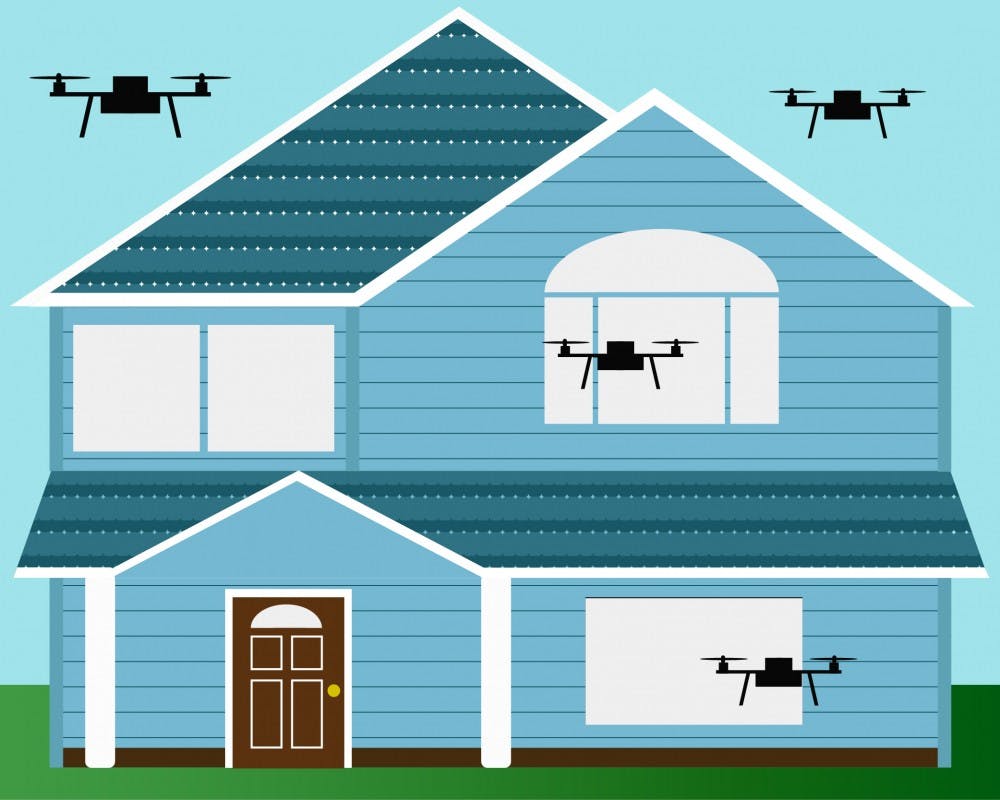As more and more personal drones circle our atmosphere, we need to be careful about protecting people’s right to privacy. Currently, drone-filmed pornography is entering the scene, and we need to make sure people aren’t being filmed without their consent.
If Mother Nature turns you on, get ready to play “Where’s Waldo” because it’s difficult to notice the small blips of human intercourse amidst the aerial shots of sweeping seascapes and mountain ranges. Think “National Geographic” meets “Playboy” magazine.
“Every time humanity invents a new technology, enterprising pervs will inevitably figure out a way to bring sex into the equation,” British magazine Dazed’s Zing Tsjeng said.
This is the very concern of Sens. Eric Koch R-Bedford and Aaron Freeman R-Indianapolis, who authored Indiana Senate Bill 299, which is centered on restricting the drone-owning layperson from practicing “remote aerial voyeurism.”
As evidenced by the rise of sub-par sorority recruitment videos, the amount of amateur drone enthusiasts in our own Bloomington bubble is quickly growing. This, combined with the fact that many of us are college students with sheer curtains and couches on our porches, makes these new drone crime laws all the more relevant.
Drones are able to access higher-up crevices of your home that a common iPhone or wide-lens camera cannot, and sadly, perverts with non-existent sex lives looking to pry into the lives of clandestine individuals isn’t exactly a new issue.
A New York Times article from 1990 first breached the subject of telescope-owning peeping toms who were far less interested in scoping out Orion’s belt — although a case could be made for Uranus — and more “focused on targets closer to home.”
Back then people only had to worry about those living in thier immediate proximity. Now creeps can pilot drones remotely from over three miles away.
Currently, Indiana legislation surrounding drone use criminalizes the invasion of a person’s “reasonable expectation of privacy,” which circles back to the Fourth Amendment of the Constitution. That being said, drone users also have their own First Amendment rights, which allows for photography and videography on public property.
Usually, laws need to play catch-up with new technologies, and it seems as though drones are becoming a pressing matter on the agenda’s of policymakers across the country.
“If a person’s in a hot tub, they’ve got an expectation of privacy defense, but I can see them from my second level,” said Sen. Mike Young R-Indianapolis at an Indiana Senate panel. He said – “So, whether I can see them for my bedroom window or another window or a (unmanned aerial vehicle) – have I invaded the expectation of privacy?”
It’s a tricky question to consider, but seeing the silhouette of someone from your window and having close-up, high definition footage of someone in their private space should be considered two different things.
This is why Indiana officials are looking to add “drone” to the list of devices that can peep into a private area. If committed, this type of crime is considered a Class A misdemeanor and could result in up to 1 year in prison with fines reaching $5,000.
Although this type of crime seems quite outlandish to most individuals, having a law surrounding aerial voyeurism wouldn’t hurt.
Unfortunately, there will always be bad apples out there that will go to extreme measures to see the color of your panties or find out whether you’re wearing boxers or briefs.




